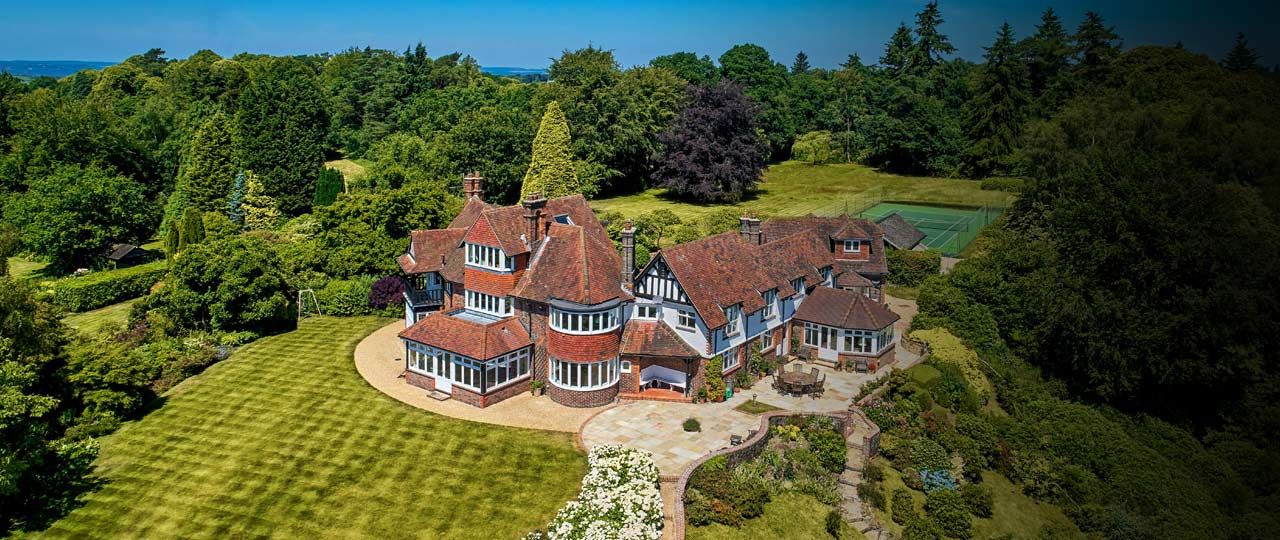
James Brine
Director New Homes, South East


Director New Homes, South East
The arresting, aristocratic facade of Edwardian houses has long been desirable for property buyers. The Edwardian era may only have lasted nine years, but it signalled a period of significant expansion and modernisation in the housing industry. New railway lines around towns and cities gave rise to “garden suburbs” for the middle classes. These tree-lined streets of houses on generous plots of land would come to be characteristic of the time.
Edwardian architects and builders sought to bring light into the homes they crafted, incorporating sizeable rooms, lengthy hallways and beautiful bay windows into their designs. These features give Edwardian homes a timeless appeal with flexible, versatile accommodation.
Edwardian architecture borrows liberally from previous eras. It is common to find neo-Georgian elements in windows and doors; Art Nouveau hints in elegant decorative elements; and inspiration from the Arts and Craft movement in handmade, ornate ironmongery.
The combination of stunning period features, solid construction and ample special proportions has given the Edwardian home significant market appeal.
How to recognise Edwardian property
Edwardian property is characterised by its focus on the unique and handcrafted. Ornate ironmongery, a strong focus on timber, gardens in front of the property and prominent chimneys are just a selection of the features that are common to the period.
An Edwardian building will often be graced with a porch, which became popular during the period. Gabled roofs, as well as rustic-style sash windows, are common to this type of property. Doors are likely glazed glass in their upper two-thirds, usually with coloured glass, with raised moulding.
In the garden, which was an important aspect of Edwardian housebuilding, ceramic quarry or terrazzo tiles may be used in pathways. Beautiful glazed tiles often adorn the walls next to doorways.
Where to find Edwardian property
Though King Edward VII’s reign was brief, from 1901 to 1910, the Edwardian style endured until the 1920s. This period saw the growth of the suburb across England’s cities. Superb examples of Edwardian villas and semi-detached houses can be found in the London suburbs of Hampstead, Dulwich and Blackheath, but Edwardian streets can be found in towns and cities across the country.
The Edwardian period was also notable for the introduction of the first garden cities. Letchworth and Welwyn Garden City were developed by inventor and city planner Ebenezer Howard to fulfil his utopian vision of a new type of city, and to incorporate the eclectic mix of styles endemic to Edwardian architecture. These garden cities would eventually become the template for many suburban towns, blending cosmopolitan life with the beauty of rural nature.
Country houses in this style were also established near rural railway stations, as wealthy Edwardians flocked to the countryside in search of a secluded retreat from modern life. There are many stunning Edwardian houses set in landscaped gardens in Hertfordshire, Kent and Surrey, as well as in more rural counties such as Shropshire.
Things to know before buying an Edwardian house
British Edwardian building standards were the highest they had been for generations, with an attention to detail and quality of materials that has rarely been surpassed, even today. This makes Edwardian properties an excellent investment for a property portfolio, or for a period home.
As they are frequently in demand, they also offer great renovation potential, particularly if the property has original period features. The generous room sizes give plenty of scope for open-plan living, and it is often possible to add a loft conversion or extend the building into the generous garden for added value.
Edwardian properties are rarely listed, but as period features are highly desirable to buyers, it is worth preserving the house’s particular Edwardian style when renovating a property.
Common issues with Edwardian homes
Although Edwardian properties are renowned for their build quality, most are still over 100 years old. When considering buying an Edwardian house, it is wise to check for any signs of common problems such as ventilation issues, damp, shifting of foundations, and exterior wall weakness. A professional consultation is best prior to purchase to ensure the property is worth the investment.
The benefits of restoring an Edwardian home
The distinct features of Edwardian period property make them ideal for a familial home. Extensive garden space, spacious rooms and hallways, and light provided by large windows make this type of house a lovely addition to a property portfolio once renovated.
Given their usual locations in city suburbs and close to transport networks, an Edwardian house can be an ideal home for a commuter and their family. Privacy and an enjoyment of the outdoors are particular features of this type of home, perfect for an existing or growing family.
View our favourite Edwardian properties or find out more about what makes an Edwardian home unique.